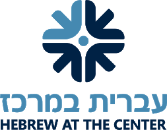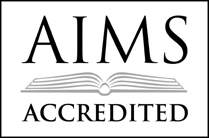Exploration, Creation, Investigation: Judaic Studies at MILTON
February 15, 2018 by
Exploration, creation, and investigation are some of the values that guide our Judaic Studies program at MILTON.
Second-grade students continue to bring depth and creativity to their exploration of the parashot (Torah Portions). Each week, one theme is highlighted and explored through the lens of art, music, Israeli culture, and personal meaning. As part of their study of Shemot (Exodus), second graders are exploring the role of the Nile within the Jewish narrative and unpacking its significance to the region over the course of history. They created models of the Nile River by incorporating soil, sand, clay, and model magic for the river bed. They then filled that riverbed with water, ultimately “flooding” it, which allowed the water to seep over the banks of the student-created Nile and irrigate the land around it – prompting the grass seed to grow. As the Nile continues to play an important role in the story of the Jewish People in Egypt, the students are utilizing their prototype as a launching pad for their investigation into the ten plagues and more. Similarly, while studying the story of Joseph and the multi-colored garment he received from his father, students in one class pieced together strips of cloth in varying colors, hues, and patterns to create a representation of what the coat might have looked like. In another class, students created collages to represent their own version of the garment using three illustrations of Joseph’s coat as their inspiration.
Third graders explored the destruction of the city of S’dom in a way that puts student engagement at the forefront of their learning. The students moved through a variety of different activities designed to stimulate curiosity, initiate meaningful conversations, and propel them forward in their textual study and understanding. At one station, students played “Perek Passuk Pump It Up,” a teacher-created game in which the students worked in pairs (chevrutah) to look up perek and passuk as quickly as they can. At another station, students worked in small groups with their Judaic Studies teacher to locate milim manchot, guide words (or roots) that illuminate the theme/s of the portion. At that station, they discussed Avraham’s argument with God about the number of tzadikim (righteous people) who would merit that S’dom be saved from destruction; the conversation focused on the significance of the decreasing numbers from 50 to 10 righteous people needed to save the city, Avraham’s repeated attempts to convince God to save S’dom, as well as comparisons of this story to other moments in history in which people raise their voices for what is right. But the most popular station was the Choice Board, which allowed students to select the activity that spoke to them most: creating a comic strip of the narrative, watching a brief video about bargaining and then writing a how-to manual, or composing a diary entry from the perspectives of Avraham, Sarah, or Lot while reflecting on how it connects with their own experiences. After each station, students reflected on this approach to learning. Elan Ernst noted, “I feel like everybody is more engaged.” And Adin Kahan asked, “Can we do this for longer?”
In fourth grade Judaic Studies, students pondered the motivation of the matriarch Rachel when she stole the idols of her father Lavan. First, they took to the parshanut (Biblical commentary) to analyze the different interpretations of Rachel’s actions. They compared the story of Rachel to the Midrash in which Avraham smashes the idol of his father in an intertextual comparison. Students also studied the text from a mathematical perspective; fourth graders estimated the size of the idols based on images of idols from the Museum of the Bible. Next, the students connected the themes in the text to historic events. They watched Dr. Martin Luther King’s “I have a Dream” speech, and discussed the importance of taking risks and standing up for one’s beliefs, while carefully considering what risks one should take to accomplish their goals. Finally, students considered how they or their family members took risks to do what is right.
As part of their study of Bat Pharaoh, the daughter of Pharaoh who rescued Moshe from his basket in the Nile, students in one fifth Judaic Studies class explored the question, “What is the impact of an action?” To jump-start their learning, students hypothesized their own answers to this question and then engaged in hands-on-learning by dropping various items into basins of water to explore the reaction of those objects on the water. Our experiments had students considering the impact of different variables such as height, weight, and force. Fifth graders then explored the “Ripple Effect” and the “Butterfly Theory” through a chalk talk, in which students responded to quotes and to each other’s ideas only through writing. In a close read of the text, students considered the direct and surprisingly far-reaching impact of the daughter of Pharaoh, and then analyzed a number of pieces of Biblical Exegesis to garner an even deeper understanding of her actions and the possible impact of those actions. According to Zach Shapiro, “Bat Pharaoh taking Moshe from the basket would eventually save the Jewish people. It’s like one small thing can change the world.” To close the unit, students determined the events with the most significant impact, symbolized those events in drawings, and then placed those events onto dominoes. The significance of the impact of that event determined how many dominoes they placed between one important event and another. One student described the unit as “deep and intriguing but also really enjoyable.”
Teachers and students alike look forward to continuing to explore the Biblical texts together with a spirit of adventure and excitement. May we continue to go from strength to strength in the second semester!






